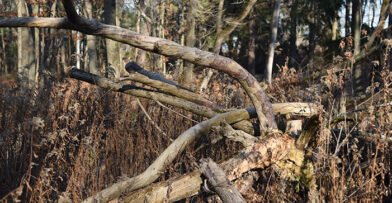
The Importance of Coarse Woody Habitat
When visitors hike our Central Wetlands Loop, Elizabeth Trail, and our other forested areas, you… Read Story >
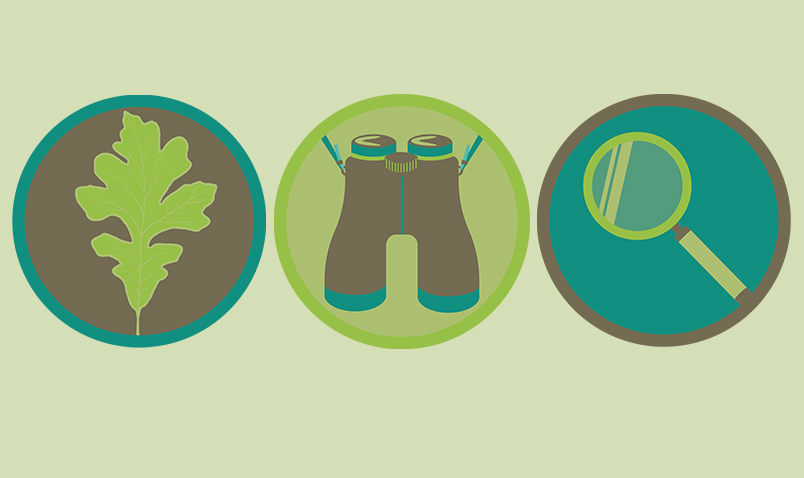
Schlitz Audubon’s Conservation Plan is our guide to revitalizing our 185 acres and strengthening the land’s biological diversity. The land is the foundation for everything we do, including offering environmental education and natural experiences for people of all ages and abilities.
The Conservation Plan identifies three major strategies that will inform our work through the year 2030: restoring native plant communities and maintaining the health of sensitive ecosystems, combating emerald ash borer, and implementing green infrastructure and stormwater management strategies to help restore the land.
Our goal is not to recreate the precise environment that existed here prior to settlement impacts, but instead to create a healthy 21st century environment informed by our region’s unique ecological heritage. Just as ecosystems constantly change, so does our plan.
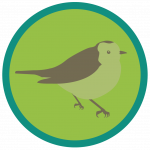
Every year, Center staff and land volunteers eradicate invasive species by the acre, and then reestablish these areas with native plants. We plant an average of 2,000 native trees and shrubs each year to restore the landscape in support of native and migratory wildlife.
The Center is divided into 256 sections called stands, each of which are uniquely identified by plant type, soil consistency, natural barriers, and many other considerations. Before restoration work begins, a strategy is developed that considers how each stand can most effectively support the ecosystem as a whole. Using this scientific approach, we can best support the plants and animals that depend upon this land for survival. Our conservation team is working to cultivate habitat types such as oak savanna, sedge meadow, and southern wet-mesic forest.
As we continue our restoration efforts, we are witnessing a greater diversity of native and migratory animals at the Center. Schlitz Audubon is home to the rusty patched bumble bee (U.S. endangered), Blanding’s turtle (Wisconsin special concern), wood frog, blue-spotted salamander, and a wide variety of migratory birds, insects, and other animals. The presence of these animals is a testament to our efforts and a measure of our progress.
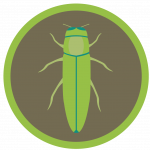
The emerald ash borer (EAB) beetle was first found in Wisconsin in 2008, and then first discovered at Schlitz Audubon in 2016. At that time, 35% of the Center’s canopy was comprised of ash trees. Our comprehensive EAB response plan is our proactive method to deal with the ongoing loss of these trees.
The plan’s strategies include treating and saving ash trees with high ecological value, removing potentially hazardous trees, alternatively stabilizing slopes currently held in place by ash trees, restoring forest habitats with other native species, and converting key areas to savanna. Oak savanna was once a prominent habitat type in our region that was easily and routinely converted to farm fields. By intentionally recreating these habitats, we are actively reclaiming and revitalizing our region’s ecological heritage.
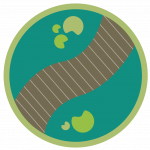
Our Stormwater Management Plan is a multi-phase project that will lessen the threats of erosion and sedimentation from extreme storms by creating wetlands that keep rain where it falls. These initiatives will also restore vulnerable forested ravine habitat, enhance habitat quality, and increase survivorship and reproduction of vulnerable species.
Central to the Stormwater Management plan is the creation of three “stormwater wetlands” that will span more than an acre combined, and provide the capacity to detain up to 453,300 gallons of stormwater runoff per year. These wetlands will, in turn, prevent stormwater from running through the vulnerable North Ravine, allowing us to undertake the important work of stabilizing and restoring this unique habitat.
After the wetlands are in place and the ravine work is finished, we will create the new Water Path Trail to ensure that all visitors can access these important habitats. The Water Path Trail will add nearly a half-mile of new wheelchair- and stroller-accessible trail, boardwalks, and teaching decks, giving access to high-quality habitats and educational hotspots.